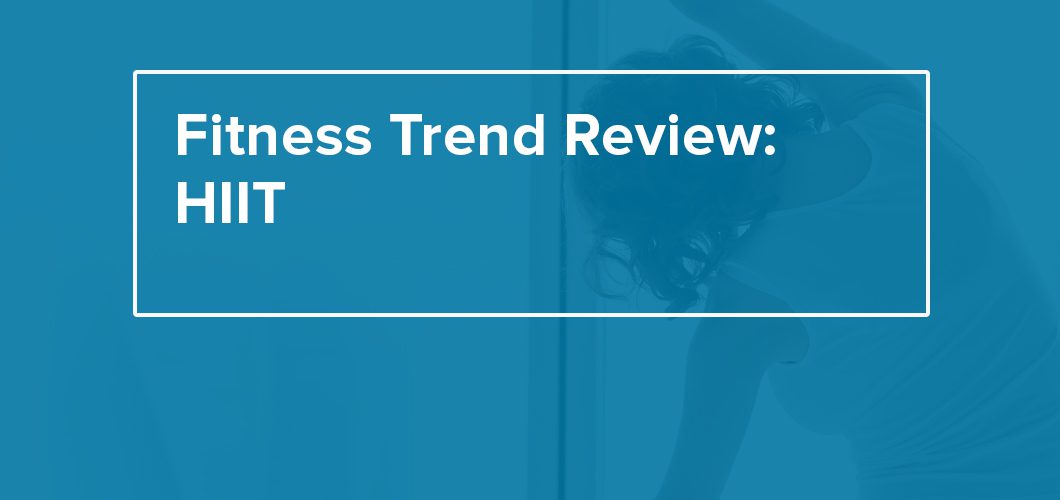In recent years HIIT workouts have become a popular trend in the fitness industry. In fact, entire franchises have been built on this concept, and most community recreation facilities offer classes of some HIIT variety.
What is HIIT?
HIIT stands for high intensity interval training. A HIIT workout can be comprised of varying interval lengths, making your overall workout time as short as 4 mins up to 30mins. A common HIIT method is called Tabata, which involves 20 second work intervals all-out followed by 10 seconds of rest, repeating 8 times total. This cycle can be done 2-5 times with a short break to recover between sets. Shorter intervals can be more ideal for beginners, while longer intervals might look something like 1 minute of work with 30 seconds rest. And as the name says, the intensity is meant to be HIGH. True HIIT involves getting the heart rate to or above 80% of the maximum heart rate. This limit is different for each person.
HIIT has been shown to have similar effects on the heart as doing continuous aerobic training. HIIT improves VO2 max, stroke volume, and enhanced aerobic capacity and efficiency among other benefits.
Why HIIT?
Unlike some fitness trends, HIIT has many physiological benefits, and in terms of time and effectiveness, gives you a great bang for your buck, and a great tool in your fitness toolbox.
Time Efficiency:
Most people don’t have the time to spend hours at the gym every day. Plus, let’s face it, cardio can be downright boring. HIIT can reduce the time spent in the gym, while still providing the weight loss benefits of steady-state cardio.
Calorie Blasting:
The most attractive quality of HIIT workouts is that it burns more calories in a shorter period. HIIT increases the excess post-exercise oxygen consumption (EPOC) effect, which means that your body will continue to burn calories at an increased rate for up to 24 hours after your workout as your body works to repair muscle damage and replace energy stores. However, this has been exaggerated by many trainers and franchises out there. Will it burn more than a steady state cardio session? Yes! But not as much as one would hope or dream of.
Anywhere, Anytime, No Equipment:
The most important part of HIIT workouts is not what you’re doing, but at what intensity. HIIT workouts can include either weights, body weight exercises, cardio machines, or a combination of all three. Flexibility in what your workout entails means that it doesn’t have to be boring. This factor also increases safety for those who might not be comfortable with strength training moves or moves that are too technical for your fitness level. You can choose exercises that you are good at, and just increase the intensity.
It’s cardio without feeling like cardio. The most popular types of HIIT involve classes where you are doing a circuit style workout. For example, 8-12 different exercises, such as skipping, lunges, push ups, jumps, etc.
How Often?
HIIT workouts should not be the only type of workout you do. Depending on your fitness level and ability to recover between workouts, 2-3 times per week is more than enough. HIIT should be done in conjunction with other types of training (traditional style strength training and longer duration steady state cardio) for a balanced fitness program. Do HIIT in moderation.
HIIT is a highly demanding form of training and can put strain on the body if you don’t have a reasonable training base behind you. If you haven’t exercised in a long while, jumping into HIIT is probably not the best plan. Get a solid fitness base first, then start with one day a week, starting with 10-15 minutes, gradually adding a few more minutes each week, then another day per week.
Should I try HIIT?
If you’re willing to work your butt of for a short period of time, HIIT might be a workout for you. However, starting slow and working up to more advanced exercises is always good advice. Consult a doctor if you have a heart condition or other health concerns that might be aggravated by intense workouts. As with any other fitness endeavour, ensure you only do what you’re comfortable with and respect your body’s limits.
Considerations
Many of the downsides for HIIT are similar to those associated with most types of exercise. Over training over long periods of exercise can lead to injuries. This means HIIT isn’t meant to be done all year or forever. Stagger HIIT workouts throughout the week and throughout the year to help reduce the chance of over-training and injury.
Kristen Hansen, BA, CSEP-CPT, PFT-NAIT, NASM-CES, FRCms



